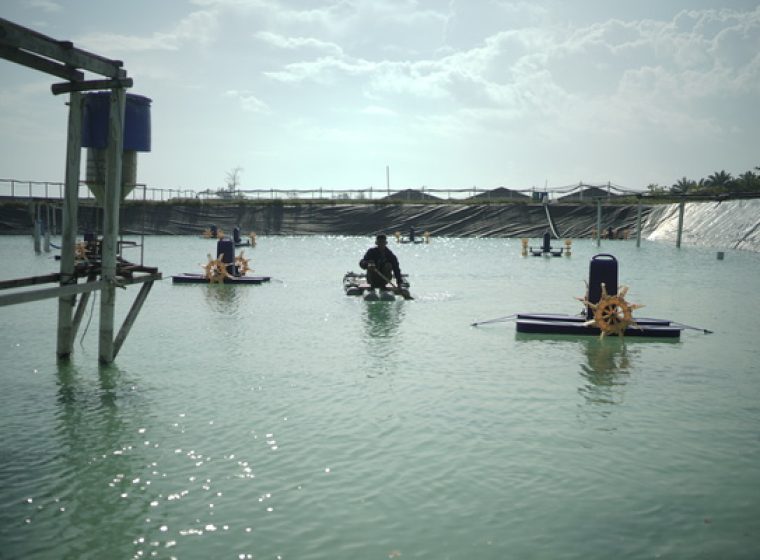An intensive vannamei shrimp pond is a type of pond that was developed as a means to increase the productivity of vannamei shrimp aquaculture. However, on the other hand, intensive ponds also produce more waste due to their high stocking density.
The waste from this intensive pond comes from the feed given to vannamei shrimp, usually in the form of carbon, nitrogen, and phosphorus compounds. These three compounds can decompose naturally on their own but in a longer time than one cultivation cycle. Therefore, waste will accumulate if the leftover materials from a prior process are not correctly disposed of.
In addition to residual waste, the calculation and layout of intensive vannamei shrimp ponds are more complex when compared to other types of ponds.
Also Read: Latest Vannamei Shrimp Prices in Indonesia
Characteristics of Intensive Vannamei Shrimp Pond
Vannamei shrimp-intensive ponds have unique characteristics that are different from other types of ponds. This is influenced by the stocking density of this type of pond. The characteristics of vannamei shrimp ponds are as follows:
1. Not Affected by Tidal Cycles
Water sources in intensive ponds do not depend on the ebb and flow of seawater. So, even when the sea water recedes, the water in the pond will not be affected.
2. Regularly Shaped Pond Plot
Intensive ponds have a regular pond shape. Usually, it is a square with an area of 0.2-0.5 ha per plot.
3. Using Aeration System
Another characteristic of intensive ponds is the existence of an aeration system in ponds that is useful for increasing dissolved oxygen in pond waters. This aeration system is usually supported by waterwheels, blowers, source pumps, and other equipment.
4. High Stocking Density
In an intensive cultivation system, it is necessary to adjust the stocking density so that production results can be maximized with minimal costs.
Stocking density determines the level of technology required in the cultivation system.
5. Rely on Artificial Feed
Considering the high stocking density of shrimp fry in intensive pond types, the need for feed is also high. Therefore, since the fry is stocked, the need for feed is immediately met with artificial feed.
Also Read: Getting to Know the DOC Term in Shrimp Farming
Purpose of Adjusting Vannamei Shrimp Stocking Density
The stocking density of vannamei shrimp fry must be adjusted to the capacity of the existing pond. This is because the stocking density affects the pond’s productivity and the costs incurred for cultivation.
1. Maintain Good Water Quality
Water quality in vannamei shrimp culture is influenced by feed residues and faeces. The greater the density of vannamei shrimp during cultivation, the more feed residues and manure are produced.
If there is too much manure and leftover feed is in the water, water quality conditions can be disturbed and even toxic.
2. Maintain the Growth of Vannamei Shrimp
The stocking density of vannamei shrimp that is not adjusted to the capacity of the pond can cause the cultured shrimp not to grow well. This is because shrimp will fight for space and nutrients from food which can cause shrimp growth to be slow if the stocking density is too high. Meanwhile, if the stocking density is too low, the space utilisation will be less than optimal.
3. Avoid Disease Attacks
Adjusting the stocking density of white shrimp can also prevent shrimp from disease during cultivation. If the stocking density is too high, the risk of death of vannamei shrimp during disease is also quite high, and vice versa.
Also Read: 4 Elements of Vannamei Shrimp Farm Management That Must Be Considered
Consult your Shrimp Farm at DELOS
Types of ponds with stocking density adjustments significantly affect harvest productivity in aquaculture. Therefore, it is vital to determine early on the number of fries to be stocked before cultivation begins.
If you need information related to good and appropriate shrimp pond management, DELOS has a consulting service via contact@delosaqua.com or through the form on our website www.delosaqua.com.
Through this consulting service, you can get answers to your shrimp pond problems. In addition, we can also help open up shrimp farming business opportunities with social, environmental, infrastructure, and regulatory approaches around the pond location. Contact DELOS now!




